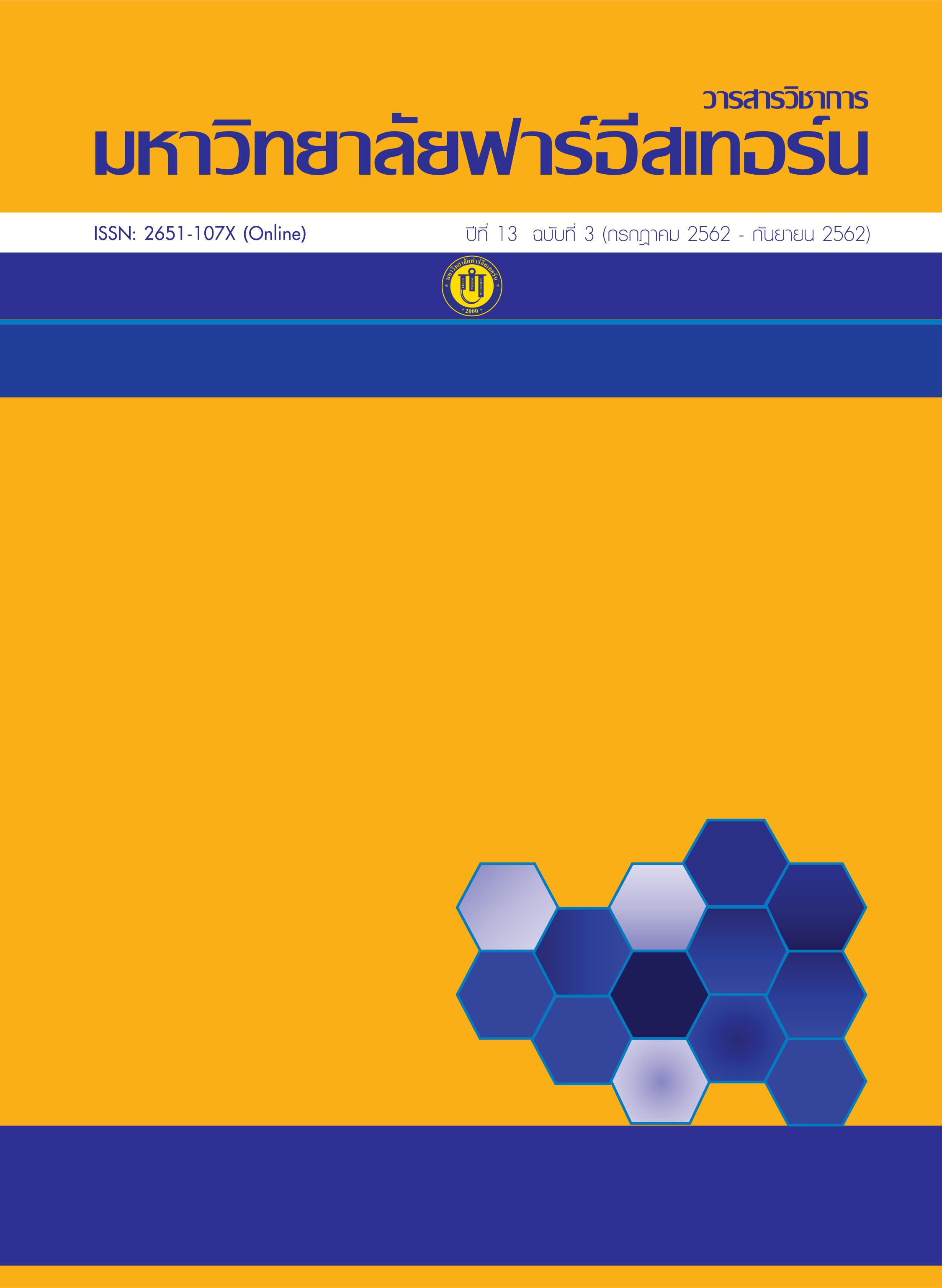Factors of Secondary School Management According to Organizational Reputation Influencing Educational Resource Mobilization
Main Article Content
Abstract
The purposes of this research were 1) to study the level of operation of school management according to the organizational reputation’s opinion 2) to study the level of secondary school’s educational resource mobilization 3) to find the predictive equation of school management elements which the best affects the educational resources mobilization. The sample of research was systematically randomized in 257 secondary schools in Office of the Basic Education Commission. The informants of each school were administrators, teachers and parents. The data was provided by 1,437 people. This research use questionnaire as research instrument. This research used data analysis by using descriptive statistics and stepwise regression analysis. The results were found that 1) the level of operation of school management according to the organizational reputation’s opinion was, in overall, in high level , 2) the educational resource mobilization was, in overall, in moderate level, and 3) the best predictive equation of school management elements that affect the educational resource mobilization of raw scores was the educational resources mobilization = 1.687 + 0.466 (Performance) + 0.284 (Innovation) - 0.206 (Citizenship) - 0.172 (Leadership) - 0.151 (Governance)
Article Details
1. Any views and comments in the FEU Academic Review Journal are the authors’ views. The editorial staff have not to agree with those views and it is not considered as the editorial’s responsibility.
2. The responsibility of content and draft check of each article belongs to each author. In case, there is any lawsuit about copyright infringement. It is considered as the authors’ sole responsibility.
3. The article copyright belonging to the authors and the Far Eastern University are copyrighted legally. Republication must be received direct permission from the authors and the Far Eastern University in written form.
References
Uchaswatdi, C. (2015). Resources Mobilization for Educational Administration in Primary Schools. Suthiparithat. 29(90), 43-58.
Puangnil, P. (2010). Strategies of educational resources mobilization for improving public basic education school in Maha Sarakham Province. Doctor Thesis, The Degree of Doctor of Education in Educational Administration, Graduate School Khon Kaen University.
Srisa-an, W. (1997). Educational Administration Resources. Bangkok: Thai Watanapanich.
National Institute for Development of Teachers, Faulty Staff and Educational Personnel. (2013). Developing of school resource mobilization approaches in Office of the Basic Education Commission. National Institute for Development of Teachers, Faulty Staff and Educational Personnel.
Office of the National Education Commission. (2002). The follow-up and evaluation report of educational reform in the 3-year anniversary of the announcement of the National Education Act, 1999, Chapter 8 Resources and investment for education. Bangkok: Bureau of Educational and Religious Studies Evaluation.
Office of the Education Council. (2006). Research report on budget allocation form for new educational forms. Bangkok: Educational Policy and Planning in Office of the Education Council.
Chamchoy, S. (2012). Concept of innovation for school management in the 21st century. Journal of Education Naresuan University.
Chaemchoy, S. (2018). School management in digital era. Chula Press.
Prajan, O. & Chaemchoy, S. (2018). The basic education school management for developing teacher’s innovative thinking skills. Educational Management and Innovation Journal. 1(2), 53-70.
Alex Maritz, Anton de Waal, Stephan Buse, Cornelius Herstatt, Astrid Lassen, Ross Maclachian. (2014) “Innovation education programs: toward a conceptual framework”. European Journal of Innovation Management. Vol.17,166-182.
Alan J. Marsh. (2003). Funding Inclusive Education. The Economic Realities.
Baker, Bruce D. 2012. Revisiting the age-old question: Does money matter in education?. Washington DC: Albert Shanker Institute.
Canada's International Development Research Centre. (2009). Resource Mobilization: A Practice Guide for Research and Community-Based Organizations 2nd edition. Venture for Fund Raising.
Cees van Riel & Charles Fombrun. (2004). Managing your company's most valuable asset: its reputation. Critical Eye.
Matthias Peter Schloderer Marko Sarstedt. (2010). Developing a measurement approach for reputation of non-profit organization. International Journal of Nonprofit and Voluntary Sector Marketing. 276-299.
Ruswell W. Rumberger. (2005). Test scores, Dropout Rates, and Transfer Rates as Alternative Indicators of High School Performance. American Educational Research Journal. Vol. 42, 3-42
Vidaver-Cohen, D. (2007) Reputation beyond the rankings: A conceptual framework for business school research. Corporate Reputation Review. 10(4), 278-304
